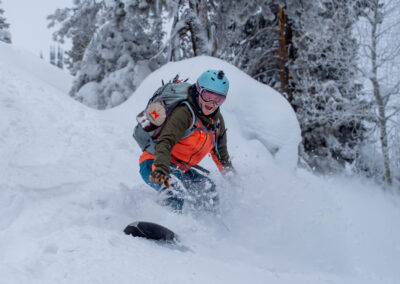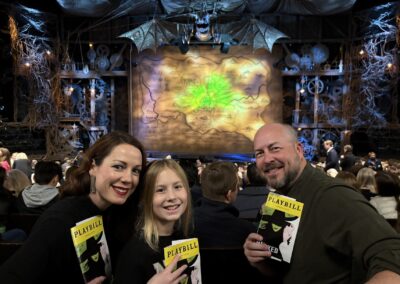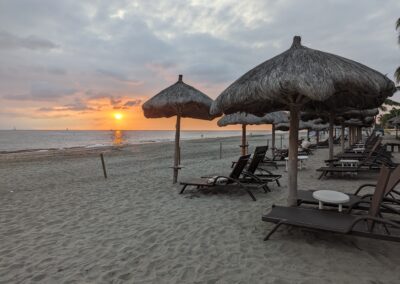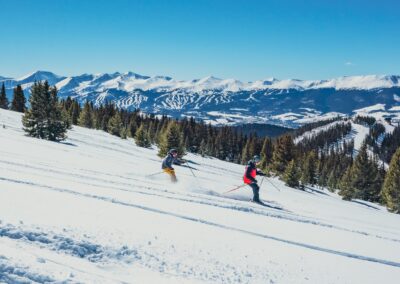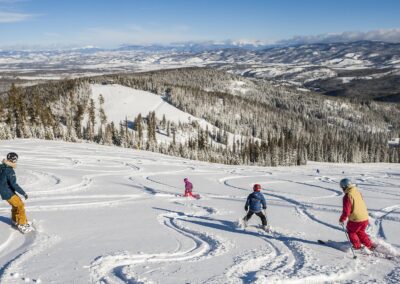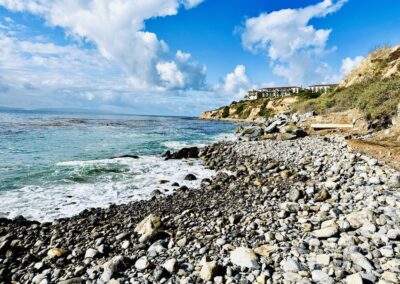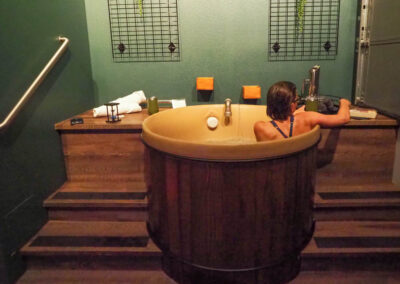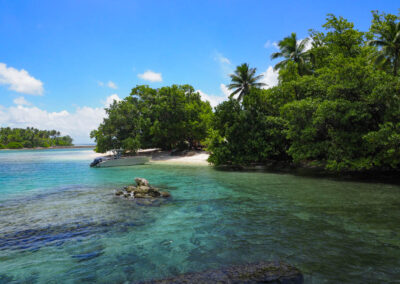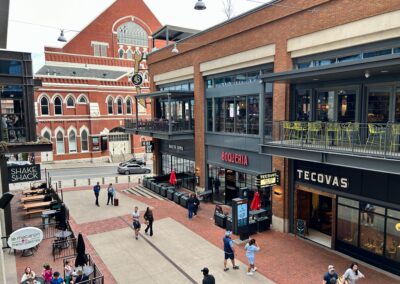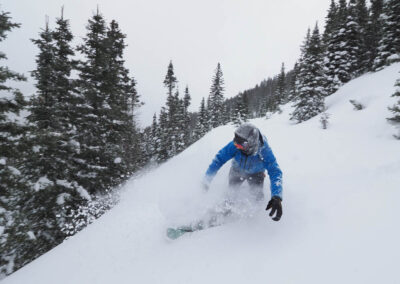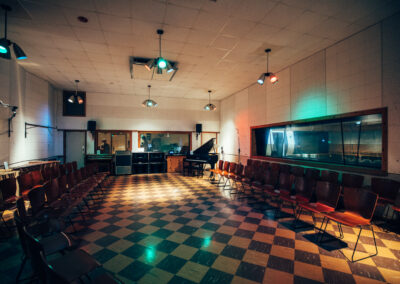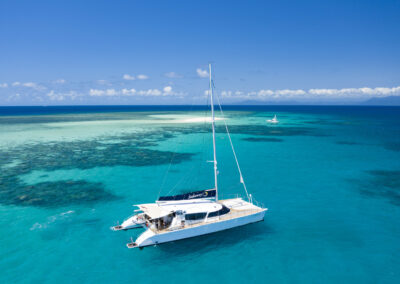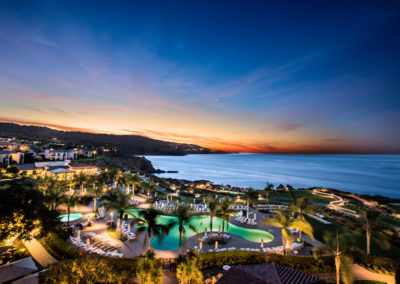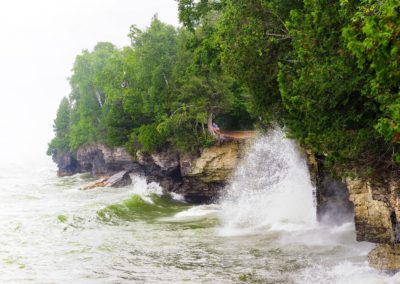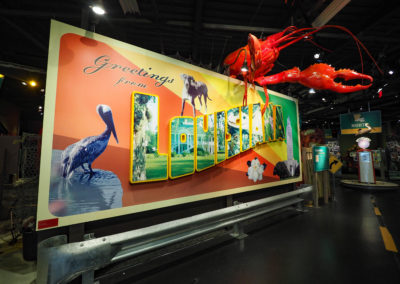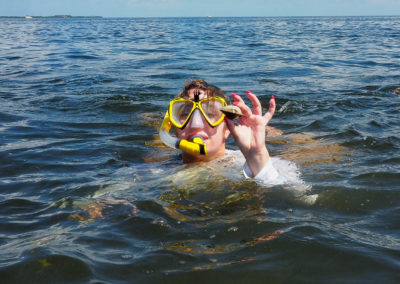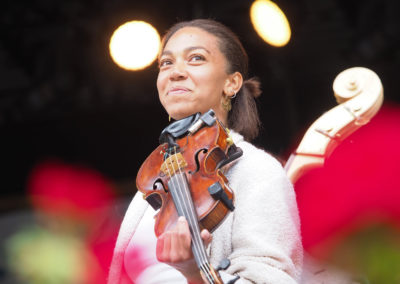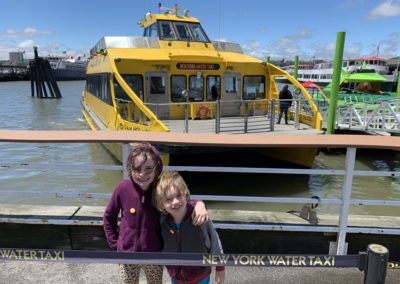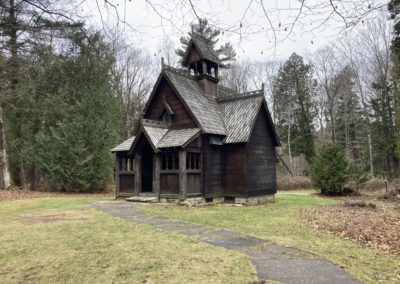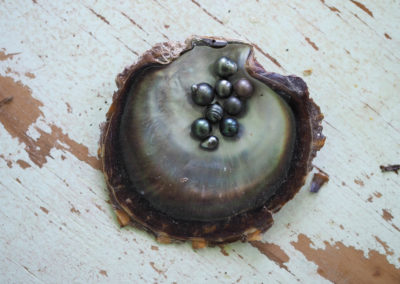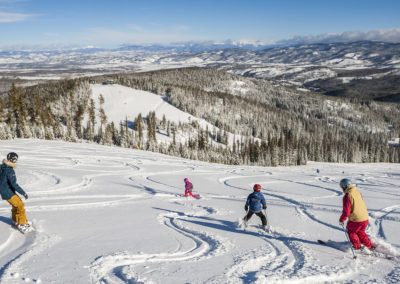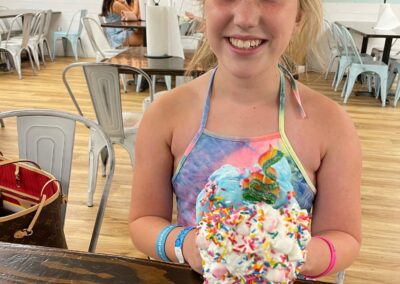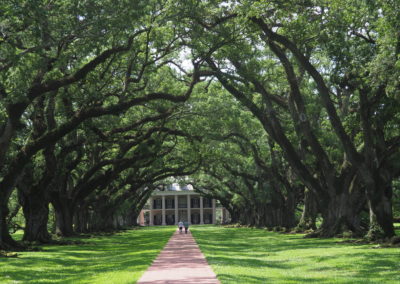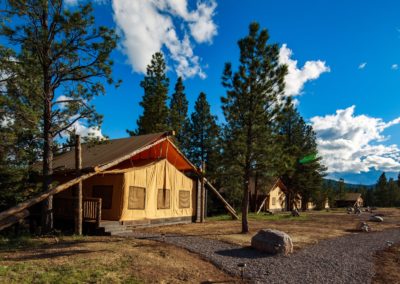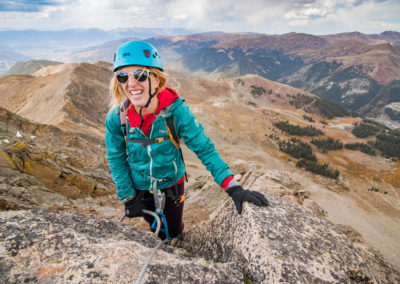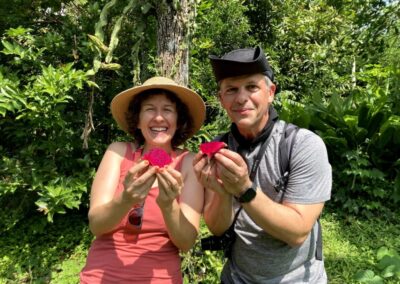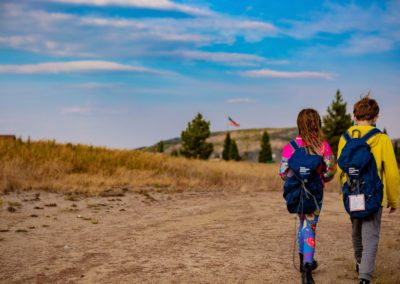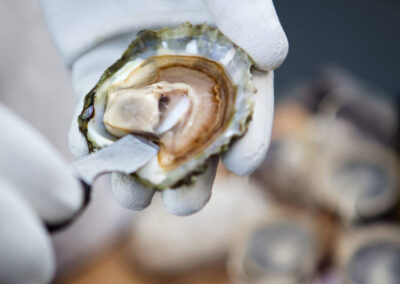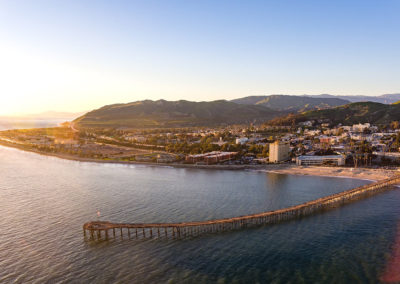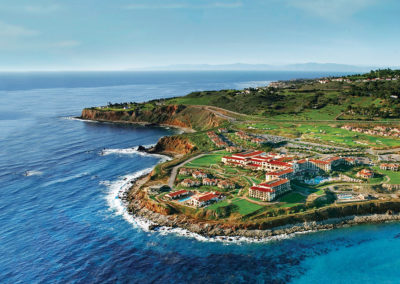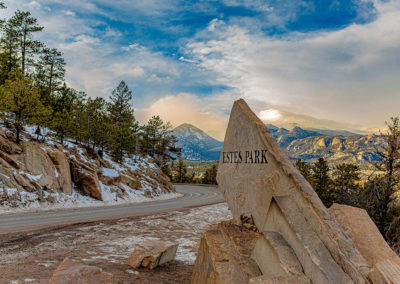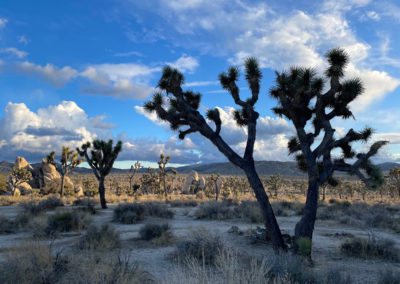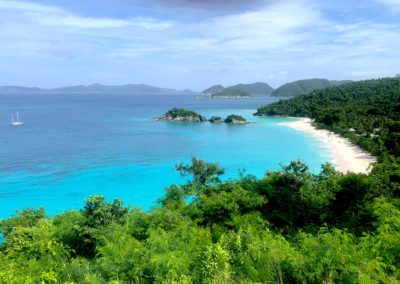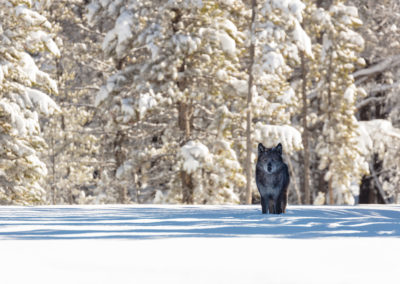
Mermaid shows take place daily at the underwater theater at Weeki Wachee Springs. Pam LeBlanc photo
I grew up in Austin and loved my family’s occasional trips to Aquarena Springs in San Marcos, where we’d sit in a dark, submerged theater and watch a cast of mermaids and swimming pigs dip and dive in front of us.
So, when I found myself with a free afternoon during a trip to Florida last month, I made a beeline for Weeki Wachee Springs, where the original mermaid shows began.
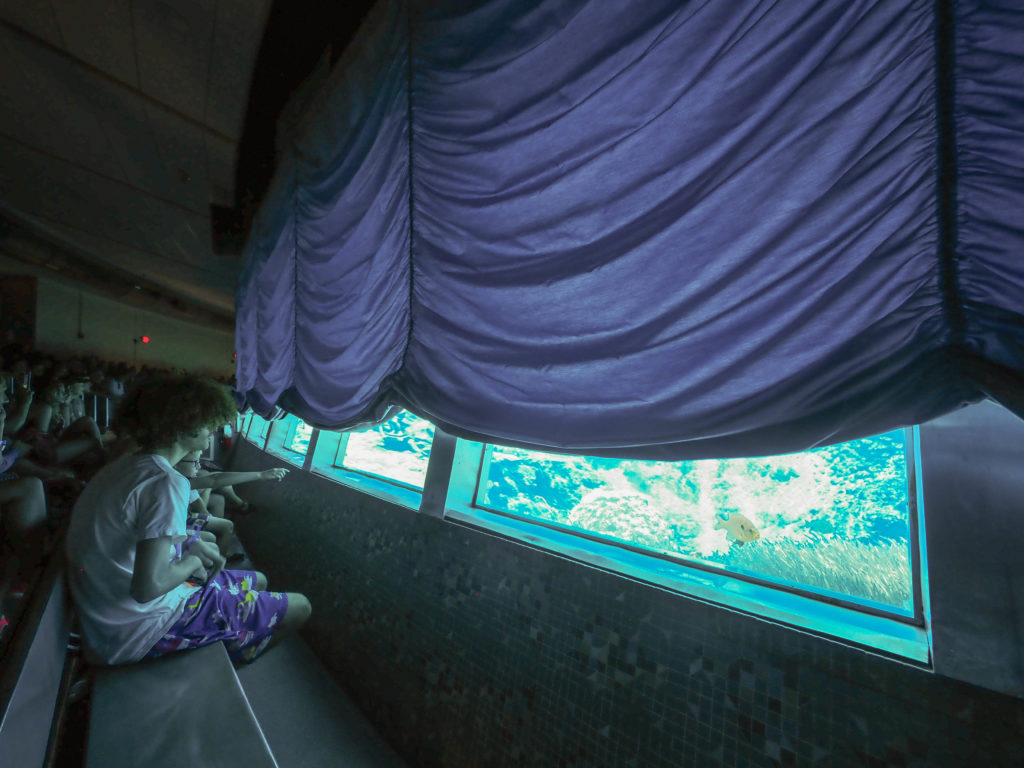
The curtain rises at a mermaid performance at Weeki Wachee Springs State Park in July 2022. Pam LeBlanc photo
The small roadside attraction opened on the western coast of Florida nearly 75 years ago. Since 1947, generations of mermaids have held their breath for impressively long periods of time and accommodated the occasional wayward manatee as they performed in the springs’ clear, 74-degree water.
History of Weeki Wachee Springs
Newton Perry, who had trained U.S. Navy frogmen during World War II, dreamed up the idea for a tourist attraction back when the highway that ran along Florida’s west coast was a two-lane road. He cleared the springs of old refrigerators and broken-down cars and planned an underwater ballet that would star “mermaids” breathing from long air hoses. He built an 18-seat theater on one side of the springs, and the cast began rehearsals.
It didn’t take off immediately.
Related: Summer in South Haven, Michigan
So little traffic passed by in those early days that the mermaids sometimes ran to the road in their swimsuits to lure motorists into the park, according to the Weeki Wachee Springs State Park website.
But soon it caught on. The mermaids were glamorous. Tourists came in droves, and women across the country applied for mermaid jobs.
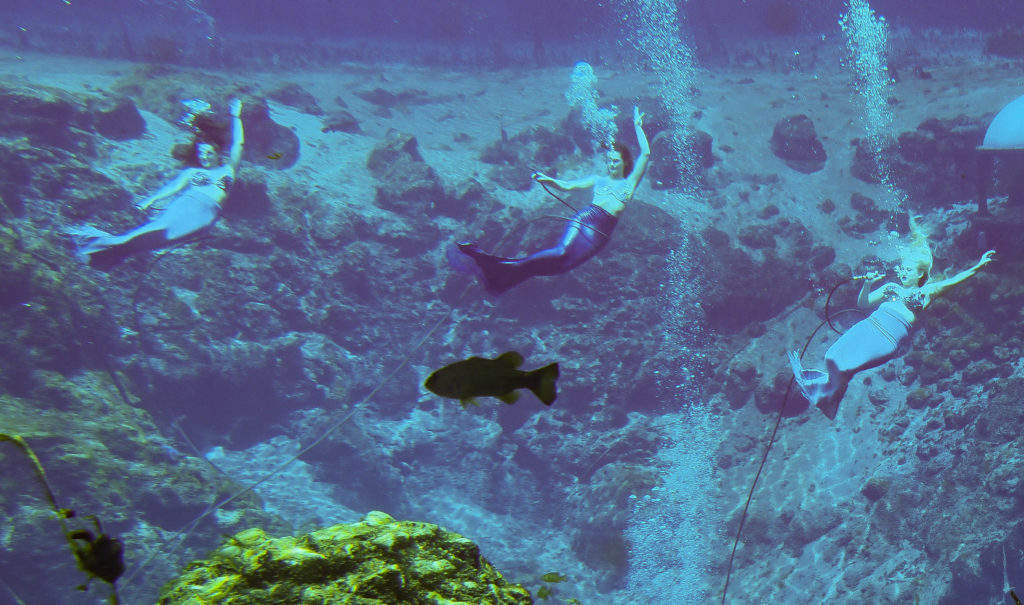
Mermaids perform a production of “The Little Mermaid” at Weeki Wachee Springs State Park. Pam LeBlanc photo
Back then, the cast performed eight shows a day. The mermaids not only performed breath-defying dances for fans, they also drank from bottles of non-carbonated Grapette and nibbled bananas – all while hovering about 20 feet under the surface. Half a million tourists a year, including celebrities such as Elvis Presley and Esther Williams, watched in rapt attention during the park’s peak in the 1950s.
Texas gets its own mermaid park
Back in Texas, a furniture and coffin store owner named A.B. Rogers was operating a small hotel and giving glass-bottom boat rides on the San Marcos River. When his son Paul Rogers took over the business in 1950, he installed a 125-seat underwater theater modeled after Weeki Wachee Springs and hired a cast of “aquamaids.” A small theme park called Aquarena Springs was born.
The American Broadcasting Company bought Weeki Wachee Springs in 1959 and built the current theater, which seats 400 people. In 2008, the roadside attraction became a state park.
In Texas, Aquarena Springs operated until 1994. A crane plucked the old submarine theater from the water in 2012, and today Spring Lake is home to the Meadows Center for Water and the Environment.
An afternoon at Weeki Wachee Springs
The Florida theme park still operates much as it did when it opened. During my recent visit, the parking lot was mostly full, and only a few empty seats remained inside the theater for the 3 p.m. mermaid show.
Related: Diving into French Polynesia’s Dreamy Manihi
I slipped into the air-conditioned theater just as a curtain of bubbles rose on “The Little Mermaid” performance. Mermaids with sparkling tails, a villainous witch with a spooky voice, an anthropomorphic sea turtle, and a heroic sailor all played into the narrative, which has aose plot is clearly still stuck in the 1950s. The under-12 set loved every minute, and as a swimmer, I found myself admiring how long each performer could hover, without breath, in one spot. Also, I liked watching the fish swoosh around in what looked like a giant aquarium. (The manatees didn’t make an appearance this time.)
After the show

Visitors can take a boat ride at Weeki Wachee Springs. Pam LeBlanc photo
The mermaid show isn’t the only attraction at the park.
Visitors can swim at Buccaneer Bay, an adjacent swimming area with a sandy beach and pair of huge, twisty slides that opened in 1982, or rent a kayak and paddle 2.8 miles down the clear-as-gin Weeki Wachee River. (The river flows 12 miles to the Gulf of Mexico, but if you want to get back to the park, you’ll have to pick up the shuttle after 2.8 miles.) There’s a wilderness boat cruise, too.
The kitschy little park doesn’t have speeding roller coasters or high-flying rides. It serves up something much better – a dose of nostalgia.

The water is clear and cold at Weeki Wachee Springs. Pam LeBlanc photo








